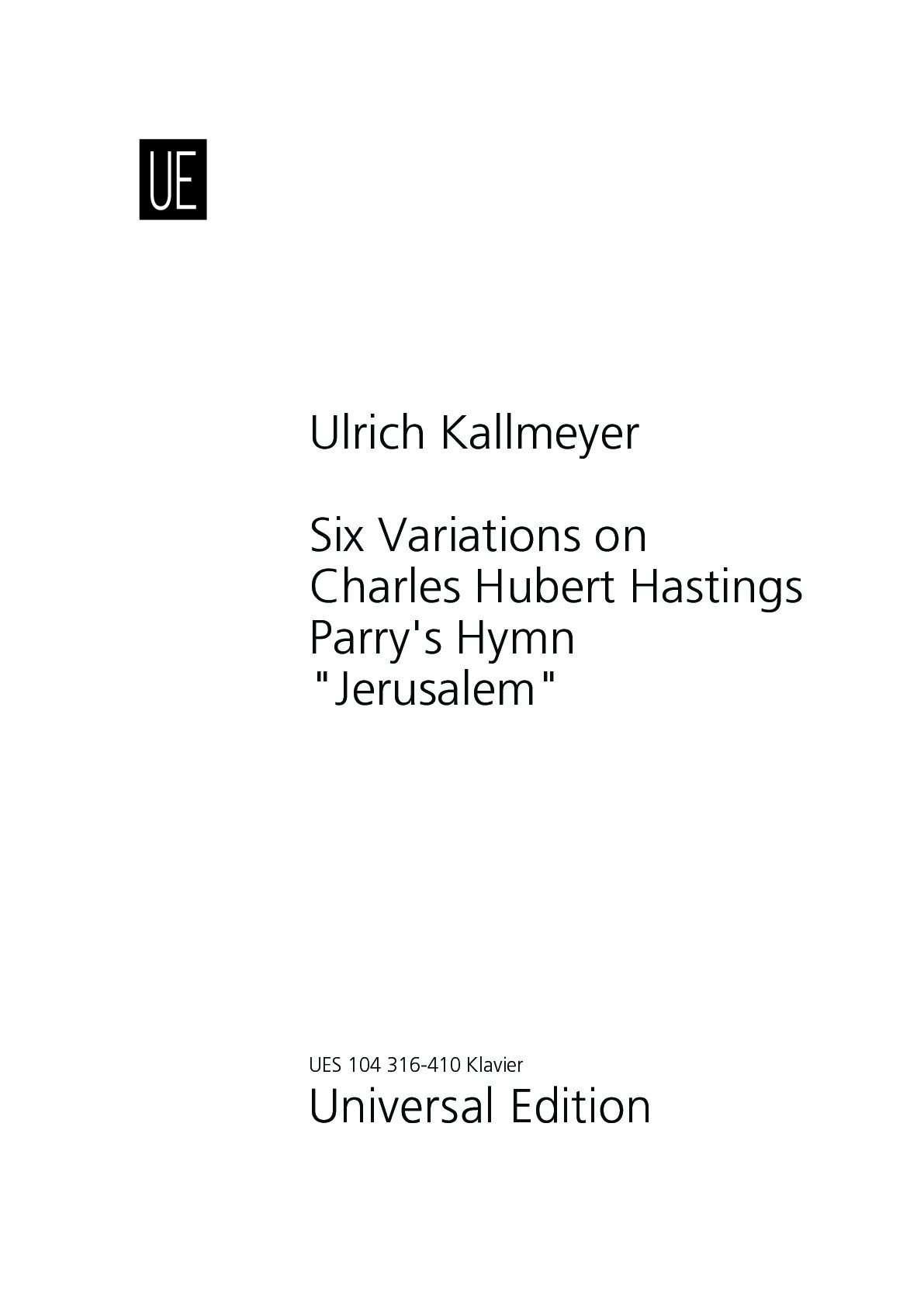.png)
Digital edition
immediately available as PDF
€14.95
Payments:
Shipping:
Ulrich Kallmeyer
Sechs Variationen über Charles Hubert Hastings Parrys Hymne "Jerusalem"
UESD104316-410
Type: digitale Noten
Format: 210 x 297 mm
Pages: 12
Digital edition
immediately available as PDF
€14.95
Payments:
Shipping:
Audio preview
Description
Recording of the Work on CD "Kosmos und Fragment"
Beethoven Webern Kallmeyer
Marie Rosa Günter
- Release Date: 5th May 2023
- Catalogue No: GEN23833
- Label: Genuin
- Length: 76 minutes
That Beethoven never set foot on English soil we know with certainty. In the case of Jesus Christ, in view of the distance in time and the inadequacy of sources, especially concerning his youth, this cannot be said with certainty, nor can the opposite. In the poem "Jerusalem", William Blake (1757 - 1827) takes up an old legend according to which Jesus is said to have visited Glastonbury in England in the company of Joseph of Arimathea.
During his life, William Blake developed a very personal, visionary understanding of Christian life in freedom and human self-determination. The city of Jerusalem appears in the poem as a metaphor for this social and political ideal, which Blake hoped to build in the face of a present perceived as problematic ("our clouded hills"). "Dark satanic mills" may refer to a mill that actually existed in the neighbourhood of Blake's London home at the time, which showed him the life of the working class under early industrial production methods. So while Beethoven perceived English conditions from afar with a transfiguring gaze, the social downsides of the tremendous economic development and the proportionally increased national self-confidence have long been noticeable in the country. Winston Churchill summed this up with grim wit in an election campaign slogan from 1901: "I see little glory in an Empire which can rule the waves and is unable to flush its sewers".
In fact, a kind of Jerusalem had already miraculously come into being on the British Isles, perhaps not in Blake's comprehensive understanding, but nevertheless with an almost unbelievable devotion and humanity for the time: in the small Scottish town of New Lanark on the River Clyde, the entrepreneur Robert Owen (1771-1858) realised a cotton factory in the years after 1800, in which he took the social needs of his workers' families into account according to almost modern standards. In view of "Jerusalem" as a fixed programme component of the "Last night of the Proms" as well as countless similar more or less state-supporting occasions, however, this fine moment of self-criticism is usually less prominent. Yet Parry himself had set an additional political accent by expressly agreeing to the use of "Jerusalem" as a song by the British suffragettes to push for women's suffrage, and its introduction in 1928 also appears as a small step on the road to Jerusalem, as Blake may have imagined.
Parry has prefaced the actual melody with an introductory four-bar movement. This is carried along consistently in the course of the "Six Variations" and forms a metrical and figurative transition between two variations. The variations, for their part, are landscape studies, perspectives on England's green and pleasant land in different colours and in different weather conditions, to be understood partly parodically, partly ironically. After the sixth variation, the row emerges from the smoky shadows back into the bright light of the original version, which is now sung festively in conclusion, by male and female voices in octave intervals.
More information
Type: digitale Noten
Format: 210 x 297 mm
Pages: 12

